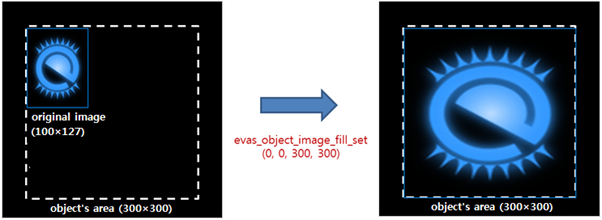
OBJECT2VR IMAGE SCALING SERIES
A 2013 analysis found that DCCI had the best scores in PSNR and SSIM on a series of test images. Besides the good conservation (or recovery) of details, notable is the ringing and the circular bleeding of content from the left border to right border (and the other way around).Įdge-directed interpolation algorithms aim to preserve edges in the image after scaling, unlike other algorithms, which can introduce staircase artifacts.Įxamples of algorithms for this task include New Edge-Directed Interpolation (NEDI), Edge-Guided Image Interpolation (EGGI), Iterative Curvature-Based Interpolation (ICBI), and Directional Cubic Convolution Interpolation (DCCI). Simple interpolation based on Fourier transform pads the frequency domain with zero components (a smooth window-based approach would reduce the ringing). The cost is using more image memory, exactly one third more in the standard implementation. It is standard in many frameworks such as OpenGL. This algorithm is fast, and easy to optimize. When downscaling the nearest larger mipmap is used as the origin, to ensure no scaling below the useful threshold of bilinear scaling is used. A mipmap is a prescaled set of downscale copies. Mipmap Īnother solution to the downscale problem of bi-sampling scaling are mipmaps. The major weakness of this algorithm is that it is hard to optimize. This ensures that all input pixels contribute to the output. The trivial solution to this issue is box sampling, which is to consider the target pixel a box on the original image, and sample all pixels inside the box. When down scaling below a certain threshold, such as more than twice for all bi-sampling algorithms, the algorithms will sample non-adjacent pixels, which results in both losing data, and causes rough results. One weakness of bilinear, bicubic and related algorithms is that they sample a specific number of pixels. Bicubic interpolation can be regarded as a computationally efficient approximation to Lanczos resampling. Lanczos resampling, an approximation to the sinc method, yields better results. In practice, the assumptions behind sinc resampling are not completely met by real-world digital images. Sinc resampling in theory provides the best possible reconstruction for a perfectly bandlimited signal. Bicubic interpolation yields substantially better results, with an increase in computational cost. Although this is desirable for continuous-tone images, this algorithm reduces contrast (sharp edges) in a way that may be undesirable for line art. Bilinear and bicubic algorithms īilinear interpolation works by interpolating pixel color values, introducing a continuous transition into the output even where the original material has discrete transitions.


Rounding this way produces fewer artifacts and is faster to calculate. One common implementation is to always round towards zero. 'Nearest' in nearest-neighbor doesn't have to be the mathematical nearest. This can preserve sharp details in pixel art, but also introduce jaggedness in previously smooth images. One of the simpler ways of increasing image size is nearest-neighbor interpolation, replacing every pixel with the nearest pixel in the output for upscaling this means multiple pixels of the same color will be present. is a great opportunity, perhaps the best, to share knowledge, technical problems and your work with other photographers, but, I think, it should be technically more accurate.See also: Comparison gallery of image scaling algorithmsĪn image size can be changed in several ways. In digital photography scaling (and the inevitable subsequent sharpening) is a key step every photographer perform with great attention, and so a photography site, obviously in a standardized way, should do.

"A site for photographers by photographers" should be technically flawless. I don't know if somewhere asks users to scale images themselves to a given resolution, it'd be a strange and limiting request. Give a look, say, to Flickr and you can see the difference. You can see obvious artifacts in correspondence of edges, as it were the effect of a poor compression. In both cases the site, or, worst, the brouwser, performs some scaling in a very, very poor way.

OBJECT2VR IMAGE SCALING FULL
Then, clicking on the photo, the user can zoom in it, but, as I realized, you can't zoom in to full resolution (to say, 1:1 visualization), or, at least, not always. On, like every other site dedicated to photography, images are first displayed to fit the layout of the page.
OBJECT2VR IMAGE SCALING UPGRADE
When I post a Photo, usually I scale it to fit 4k resolution so to allow visitors to display it in the best viewing conditions (4k monitors are common, and I'm asking myself if I should upgrade to 5k.).


 0 kommentar(er)
0 kommentar(er)
